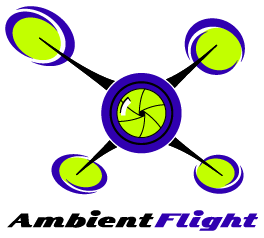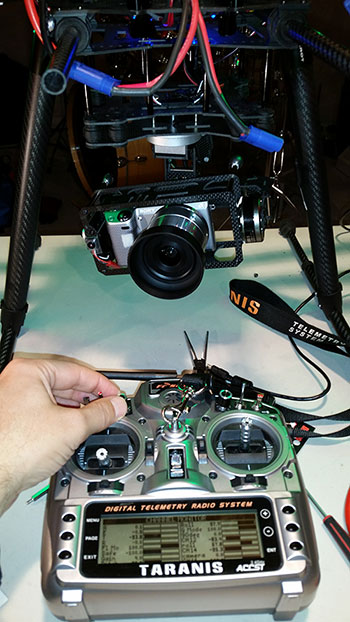

Winter is in full force here with plenty of snow and very cold temperatures. I’ve been working on fine tuning the settings for my large hexacopter (six propeller drone) this year, and when the snow and cold hit I saw that as an opportunity to capture some “winter” themed video and photos for my demo reel. The cold temperatures threw all sorts of monkey wrenches into that idea.
How Cold Temperatures Affect Drones
Drones are highly technical machines with motors, sensors, tight tolerances. The cold temperatures can affect the sensors such as the gyroscope and accelerometers, causing them to misbehave or produce unexpected results. This can affect the flight characteristics of the bird.
Camera gimbals, which are used to keep cameras level or smooth out motion, also have these types of sensors. Cold temperatures can cause gimbals to perform differently than they would in warmer temperatures. One way to try and get around these issues is to calibrate the sensors in the same cold temperatures, not in the warmth of the shop.
Batteries can be greatly affected by the cold. There’s a reason why Sears advertised that their Die Hard car batteries performed in extreme winter conditions, because cold can reduce battery performance. Cold temperatures typically translate to shorter flight times. This is very important to keep in mind for those who time flights rather than keeping an eye on battery voltage. I’ve found that in very cold temperatures the voltage drops quickly at first, but does level out a bit toward the end of the flight.
Brittle parts can be a problem. If there are parts of the drone which need to be tightened before flight, doing so in the cold could result in easy breakage. For instance, the arms on my hexacopter are foldable. I make sure they’re tightened down in the warmth of my house and that I don’t tighten them down outside in the cold. Hard landings in the cold with more brittle parts could mean more damage to the bird in a crash.
Lastly, the pilot can be greatly affected by the cold. While flying yesterday in 12 degree fahrenheit temperatures, my bare fingers were numb about five minutes into the first battery set. Numb fingers can be a very bad thing when the feel of the controls on the remote is so important. With a numb thumb I could easily bump the throttle down and not feel that I’ve done so. A bad bump could mean reducing thrust enough that the bird falls from the sky, or perhaps a bump up in throttle might turn the bird into a kamikaze.
Air Density
Cold temperatures mean higher air density. This can change the flight characteristics of the drone. With higher air density the same propellor RPMs produces more lift. The motors will not have to work as hard, which could be a positive or a negative depending on the setup. Usually it is a positive though, producing slightly smoother flight and working the setup a little less.
 The 3-axis gimbal (camera stabilizer) on my large hexacopter was tuned and configured fairly well a month or two ago. As winter came, those settings become useless. Cold temperatures muck up the accelerometer and gyroscope and the footage is unusable with the vibrations and big horizon shift.
The 3-axis gimbal (camera stabilizer) on my large hexacopter was tuned and configured fairly well a month or two ago. As winter came, those settings become useless. Cold temperatures muck up the accelerometer and gyroscope and the footage is unusable with the vibrations and big horizon shift.
In the last post I devised a way to counteract the horizon shift, or what is called “roll” in the gimbal. When the gimbal started up a few degrees off, I had a knob on my remote to trim it to level it out. Great. That worked, until the copter turned or banked. Then the horizon would be off again. I can work around it if I’m doing separate “runs” of a target, or shooting stills. That may be the only option in the cold. Or perhaps I need to do a full calibration with my computer and copter out in the cold.
Since the roll fix, and subsequent other issues appeared, I’m now in the pandora’s box scenario. I’ve been in gimbal tuning hell. I’m learning more though, and hopefully the end result (which is hard to envision right now), will be the highest quality aerial photos and video possible.
 It is winter now here in my neck of the woods. I’ve had some problems with my gimbal on my hexacopter regarding horizon shift. When I calibrate and power up the 3-axis Arris Zhaoyun gimbal indoors in my shop, it powers up perfectly level. When I power up outside recently, in colder temperatures, the roll axis is off by about 10-15 degrees, making all the shots tilted as if they were part of the original Batman movie.
It is winter now here in my neck of the woods. I’ve had some problems with my gimbal on my hexacopter regarding horizon shift. When I calibrate and power up the 3-axis Arris Zhaoyun gimbal indoors in my shop, it powers up perfectly level. When I power up outside recently, in colder temperatures, the roll axis is off by about 10-15 degrees, making all the shots tilted as if they were part of the original Batman movie.
As it turns out the sensors in the gimbal are prone to issues when in colder temperatures, causing the gimbal to “think” it is level but it is not. The problem has been getting worse as the temps drop more and more.
I decided I’d try to set up a knob on my Taranis transmitter, similar to a trim knob might be setup for the motors. That way if the roll axis was off, meaning the gimbal was not level, I could turn the knob a bit and level it off. I setup the SimpleBGC software which configures the gimbal, to receive roll commands and hooked up the gimbal’s roll servo cable to channel 12 on my Taranis receiver. Amazingly, it worked on the first shot. That’s power geek for you.
Below is a video describing the process:
The roll control knob is working well and I’m looking forward to flying in the cold and capturing some great, LEVEL, aerial video and photos.
Below is a screencap of the SimpleBGC settings.